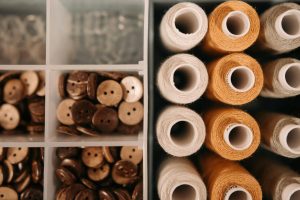In today’s world, the concept of sustainability has gained significant traction as individuals and businesses alike are looking for ways to minimize their environmental impact. One of the key practices in the realm of sustainability is upcycling, which involves repurposing waste materials into new products of higher quality and environmental value. When it comes to upcycling, the choice of materials plays a crucial role in determining the success and impact of the process. In this article, we will explore some of the best sustainable materials that can be used for upcycling everyday products, highlighting their benefits and applications.
The Versatility of Upcycling with Glass
Glass is a versatile and popular material that can be effectively used in upcycling projects. Old glass bottles, jars, and containers can be transformed into beautiful and functional items such as vases, candle holders, and storage containers. The process of upcycling glass not only diverts waste from landfills but also helps to reduce the energy consumption associated with producing new glass products. Glass is a durable material that can be repurposed multiple times, making it an excellent choice for sustainable upcycling projects.
Reviving Old Textiles through Upcycling
Textiles are another category of materials that are ideal for upcycling. Old clothing, fabrics, and linens can be creatively transformed into new garments, accessories, and home decor items through upcycling techniques such as patchwork, quilting, and weaving. By giving new life to old textiles, upcycling helps to reduce the environmental impact of the fashion and textile industry, which is known for its high water usage and chemical pollution. Upcycling textiles not only promotes sustainability but also allows for creativity and individuality in design.
Harnessing the Potential of Upcycled Wood
Wood is a timeless and natural material that can be upcycled in numerous ways to create unique and eco-friendly products. Old furniture, pallets, and wooden crates can be repurposed into new furniture pieces, home accents, and garden decorations through upcycling techniques such as sanding, painting, and assembly. Upcycled wood products not only add a touch of rustic charm to spaces but also help to preserve forests and reduce the demand for new timber. By upcycling wood, individuals can contribute to environmental conservation while enjoying the beauty and warmth of natural wood in their everyday surroundings.
Exploring the Potential of Upcycling Plastics
Plastic waste is a major environmental concern, but through upcycling, it can be transformed into valuable and sustainable products. Discarded plastic bottles, containers, and packaging materials can be repurposed into new items such as furniture, toys, and decorative accessories using techniques like melting, molding, and cutting. Upcycling plastics helps to reduce the amount of plastic ending up in oceans and landfills, while also conserving energy and resources that would be used in creating new plastic products. By embracing upcycling, individuals can play a part in tackling the plastic pollution crisis and promoting a more circular economy.
Conclusion
Upcycling presents a unique and creative approach to sustainability by turning waste materials into valuable resources. By choosing the right materials for upcycling projects, such as glass, textiles, wood, and plastics, individuals can make a positive impact on the environment while enjoying the process of creating something new from something old. Incorporating upcycled products into our daily lives not only helps to reduce waste and conserve resources but also allows us to appreciate the beauty and potential of materials that might otherwise be discarded. Embracing the practice of upcycling can inspire innovation, promote sustainability, and contribute to a more environmentally conscious way of living.




